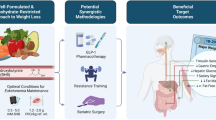Abstract
Ghrelin levels are increased by fasting and energy restriction, decreased by food intake, glucose load and insulin but not by lipids and amino acids. Accordingly, ghrelin levels are elevated in anorexia and cachexia and reduced in obesity. Herein we compared the effects of a standardized light breakfast (SLB) on morning circulating ghrelin levels with those of oral glucose load (OGTT) in normal subjects. Specifically, 8 young adult volunteers [age (mean±SEM): 28.0±2.0 yr; body mass index (BMI): 22.4±0.6 kg/m2] underwent the following testing sessions: a) OGTT (100 g po at 0 min, about 400 kcal); b) SLB (about 400 kcal, 45% carbohydrates, 13% proteins and 42% lipids at 0 min) on three different days; c) placebo (100 ml water po). In all sessions, at baseline, blood samples were withdrawn twice at 5-min interval to characterize the inter- and intra-individual reproducibility of the variables assayed. After placebo and OGTT, blood samples were withdrawn every 15 min up to +120 min. After SLB, blood samples were taken at 60 min only. Ghrelin, insulin and glucose levels were assayed at each time point in all sessions. Similarly to insulin and glucose levels, at baseline, ghrelin showed remarkable intra-subject reproducibility both in the same sessions and among the different sessions. Placebo did not significantly modify ghrelin, insulin and glucose. OGTT increased (p<0.01) glucose (baseline vs peak: 80.0±3.6 vs 140.5±6.3 mg/dl) and insulin (20.2±6.2 vs 115.3±10.3 mU/l) levels. SLB increased (p<0.05) both insulin (16.3±1.8 vs 48.3±6.3 mU/l) and glucose (74.5±3.7 vs 82.9±3.1 mg/dl) levels. Notably both the insulin and glucose increases after OGTT were significantly higher (p<0.01) than that induced by SLB. After OGTT, ghrelin levels underwent a significant reduction (baseline vs nadir: 355.7±150.8 vs 243.3±98.8 pg/ml; p<0.05) reaching the nadir at time +60 min. Similarly, ghrelin levels 60 min after SLB (264.8±44.8 pg/ml) were significantly (p<0.01) lower than at baseline (341.4±54.9 pg/ml). No significant differences in the reduction of ghrelin levels after OGTT and SLB were observed. In conclusion, these findings show that light breakfast inhibits ghrelin secretion to the same extent of OGTT in adults despite lower variations in glucose and insulin levels.
Similar content being viewed by others
References
Kojima M, Hosoda H, Matsuo H, Kangawa K. Ghrelin: discovery of the natural endogenous ligand for the growth hormone secretagogue receptor. Trends Endocrinol Metab 2001, 12: 118–22.
Broglio F, Arvat E, Benso A, et al. Ghrelin: endocrine and non-endocrine actions. J Pediatr Endocrinol Metab 2002, 15: 1219–27.
Muccioli G, Tschop M, Papotti M, Deghenghi R, Heiman M, Ghigo E. Neuroendocrine and peripheral activities of ghrelin: implications in metabolism and obesity. Eur J Pharmacol 2002, 440: 235–54.
Gnanapavan S, Kola B, Bustin SA, et al. The tissue distribution of the mRNA of ghrelin and subtypes of its receptor, GHS-R, in humans. J Clin Endocrinol Metab 2002, 87: 2988.
Broglio F, Gottero C, Benso A, et al. Ghrelin and the endocrine pancreas. Endocrine 2003, 22: 19–24.
Yoshihara F, Kojima M, Hosoda H, Nakazato M, Kangawa K. Ghrelin: a novel peptide for growth hormone release and feeding regulation. Curr Opin Clin Nutr Metab Care 2002, 5: 391–5.
Tschop M, Wawarta R, Riepl RL, et al. Post-prandial decrease of circulating human ghrelin levels. J Endocrinol Invest 2001, 24: RC19–21.
Shiiya T, Nakazato M, Mizuta M, et al. Plasma ghrelin levels in lean and obese humans and the effect of glucose on ghrelin secretion. J Clin Endocrinol Metab 2002, 87: 240–4.
Lucidi P, Murdolo G, Di Loreto C, et al. Ghrelin is not necessary for adequate hormonal counterregulation of insulin-induced hypoglycemia. Diabetes 2002, 51: 2911–4.
Mohlig M, Spranger J, Otto B, Ristow M, Tschop M, Pfeiffer AF. Euglycemic hyperinsulinemia, but not lipid infusion, decreases circulating ghrelin levels in humans. J Endocrinol Invest 2002, 25: RC36–8.
Prodam F, Gottero C, van Koetsvelt P et al. Metabolic and cholinergic modulation of ghrelin secretion in humans. 85th Annual Meeting, Philadelphia, Pennsylvania, June 19–22, 2003, abs. P1-554.
Cummings DE, Schwartz MW. Genetics and pathophysiology of human obesity. Annu Rev Med 2003, 54: 453–71.
Ariyasu H, Takaya K, Tagami T, et al. Stomach is a major source of circulating ghrelin, and feeding state determines plasma ghrelin-like immunoreactivity levels in humans. J Clin Endocrinol Metab 2001, 86: 4753–8.
Tolle V, Bassant MH, Zizzari P, et al. Ultradian rhythmicity of ghrelin secretion in relation with GH, feeding behavior, and sleep-wake patterns in rats. Endocrinology 2002, 143: 1353–61.
Cummings DE, Purnell JQ, Frayo RS, Schmidova K, Wisse BE, Weigle DS. A preprandial rise in plasma ghrelin levels suggests a role in meal initiation in humans. Diabetes, 2001, 50: 1714–19.
McCowen KC, Maykel JA, Bistrian BR, Ling PR. Circulating ghrelin concentrations are lowered by intravenous glucose or hyperinsulinemic euglycemic conditions in rodents. J Endocrinol 2002, 175: R7–11.
Nakagawa E, Nagaya N, Okumura H, et al. Hyperglycaemia suppresses the secretion of ghrelin, a novel growth-hormone-releasing peptide: responses to the intravenous and oral administration of glucose. Clin Sci (Lond) 2002, 103: 325–8.
Beck B, Musse N, Stricker-Krongrad A. Ghrelin, macronutrient intake and dietary preferences in long-evans rats. Biochem Biophys Res Commun 2002, 292: 1031–5.
Lee HM, Wang G, Englander EW, Kojima M, Greeley GH Jr. Ghrelin, a new gastrointestinal endocrine peptide that stimulates insulin secretion: enteric distribution, ontogeny, influence of endocrine, and dietary manipulations. Endocrinology 2002, 143: 185–90.
Author information
Authors and Affiliations
Corresponding author
Rights and permissions
About this article
Cite this article
Gottero, C., Bellone, S., Rapa, A. et al. Standard light breakfast inhibits circulating ghrelin level to the same extent of oral glucose load in humans, despite different impact on glucose and insulin levels. J Endocrinol Invest 26, 1203–1207 (2003). https://doi.org/10.1007/BF03349158
Accepted:
Published:
Issue Date:
DOI: https://doi.org/10.1007/BF03349158




